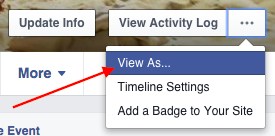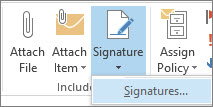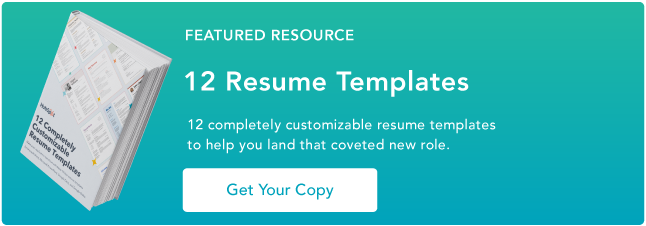
Starting a job search is a daunting task. People often feel pressured to find a new job as quickly as humanly possible -- making it all too easy to jump headfirst into the hustle of browsing job listings and sending out applications to everything that looks remotely up your alley.
Not so fast, my friend.
In a world where information about you is readily available on the web and social media, it's vital that you clean up and update your digital footprint and personal brand -- before you start sending out those applications. Trust me, it'll make your job search go much more smoothly.
Last summer, I found myself in an unexpected job search of my own. As a marketer, I did what I do best: I ran my job search like a marketing campaign. That meant not only updating my resume, but updating my personal brand, my social media profiles, my email signature, and more.
Here are six steps I took during that job search that helped me land my job at HubSpot within a month. (Want your marketing resume to stand out to recruiters? Click here to learn how to get your inbound marketing certification from HubSpot Academy.)
6 Things to Update Before Starting Your Next Job Search
1) Update your resume, and use it to tell a story you’re excited about.
Your resume is still one of the most important parts of your job application. But when it comes to updating it, a lot of people approach them with too rigid a perspective. Interviewers want to hear more than the projects you worked on and the result you achieved; they want to hear the excitement in your voice as you tell them about those projects.
First, take a look at the last version of your resume. (Download these 10 free marketing resume templates if you're starting from scratch.) Then, reflect on who you are today compared with who you were when you wrote the last edition of your resume.
Start with the big stories, the home runs, and the campaigns that actually moved the needle for your team, your customers, or your company. Add new skills, technical or not -- you know, the supporting evidence to how you accomplished those home runs. Sprinkle in hard numbers wherever you can to make those stories real.
Once you've got the content down, refresh your formatting. How you format the document itself clues recruiters and hiring managers in to the way you collect your thoughts and organize your ideas. Also, if you're three to five years out of college or graduate school graduation, go ahead and move that "Education" section to the bottom -- that is, unless you connected with someone through an alumni network or if you know an executive there also went to your school.
2) Update your professional (and personal) brand.
While you’re creating your resume, think about your personal brand. What are you passionate about? What do you do outside of work? If someone were to ask you who you are and what you care about, what's your thirty-second elevator pitch? If you were to get stuck in that elevator, what's the long version -- with all the details that describe how you got to where you are and where you'd like to be in the future?
When you answer these questions, you're building your personal narrative. When you do this exercise, be honest with yourself. Be sincere. Make sure this is really a story about you. If you told your closest friends your spiel, would they laugh you out of the room? (Here's a detailed guide to personal branding if you need some help.)
Once you've gotten your message and your branding down, it's time to get into the nitty gritty.
3) Update your social networks for the mission at hand.
When recruiters and interviewers do research on you to see if you're a fit, you'd better believe they're going to take a good look at your social profiles. In fact, a study from Jobvite found that 93% of hiring managers will review a candidate’s social profile before making a hiring decision.
The last thing you want is for your posts to cost you a job opportunity. Here are some steps you can take to audit your social media presence.
Consider updating privacy settings to make sure only the posts you want public can be seen by potential interviewers.
First, see what your profile looks to people who aren't Facebook friends with you (and people with varying degrees of friendship) using Facebook's "View as" feature. To do that, go to your Facebook profile and click the button with the three dots to the right of "View Activity Log" on your cover photo, and click "View As."

When the page refreshes, it'll show you what your profile looks like to the public. You can also go ahead and type in specific friends' names to see what your profile looks like to them.
In many ways, recruiters might see your tweets are an extension of your personality, interests, and opinions. Take care to read through your last few months of tweets to make sure they represent you in a professional way. In retrospect, that angry tweet you sent to an airline while sitting on the tarmac may not have cast you in the best light ...
First, turn off broadcast notifications so you can make changes to your profile without broadcasting them to your network. To do that, log in and move your cursor over "Profile" at the top of your homepage, and select "Edit Profile." Then, find the box on the righthand side of your profile that says "Notify your network?" and toggle the button so it says "No."

Next, add media, examples of your work, a link to an updated portfolio, and any new skills, certifications, and awards you may have gained. (Click here for a complete cheat sheet for updating your LinkedIn profile.)
4) Update your email signature.
Chances are, you're going to be emailing back and forth with recruiters and potential employers as you search for your next job. An email signature is an easy way to link to places you want them to see, like your Twitter and/or LinkedIn accounts, your blog, your online portfolio, and so on. (Just be sure you're not making any of these 15 common email signature mistakes.)
Most email clients have a feature that'll allow you to set up a signature that'll be automatically appended to any emails you compose.
To set up an email signature in Gmail: Click the gear icon and select "Settings" from the dropdown menu. Stay on the "General" tab and scroll down to the Signature" section. Then, select the option below "No signature" to turn the feature on. (You can find more details here.)
To set up an email signature in Outlook: On the "Home" tab, choose "New Email." On the "Message" tab in the "Include" group, choose "Signature" and then "Signatures.

Under "Select signature to edit," choose "New." In the dialogue box that appears, type in a name for the signature. Under "Edit signature," type in your signature and then choose "OK" when you're done. (You can find more details here.)
(HubSpot customers: Click here to learn how to set up your email signature in HubSpot's CRM.)
5) Update your network, and empower them to help you.
Now that your message, brand, and digital representation are all updated and ready, it’s time to tell your friends, family, mentors, colleagues, and coaches that you’re on the market. (If you're choosing to be open about it, that is.)
You can prepare for these conversations in a few different ways. If you know the person’s network extends into a company you’re interested in, be direct with them. Ask for an introduction to the person you need to speak to. (Not sure how? Read this blog post for an email template for asking someone to give you an email introduction.)
Or, ask them for a LinkedIn recommendation. My colleague Emma Brudner wrote a blog post about how to ask for LinkedIn recommendations, including an email template. She made a great point in her post: To ensure you get a customized recommendation, prompt the person you ask with a few specific topics or questions. For example:
"I'm really proud of the work we did on XYZ project. Could you write a bit about that initiative and what our collaboration and results were like?"
If you don’t have a target quite yet, be prepared to describe the opportunity you’re looking for: company size, industry, job function, role, and so on. The better you can prepare the people you reach out to, the more likely they are to help you.
6) Refresh your mindset.
Like I said, starting a job search is no easy task. You will get ignored, and you will get rejected. Expect it, and learn from it. Adapt your process. Keep your chin up, and keep your eyes on the prize.
On the other side of that same coin, don’t get overconfident, either. It can be tempting to stop sourcing new opportunities when you have a third-round interview at a company you like. It can feel like you’re going to jinx it, right? Here’s the problem: If that opportunity falls through, you’ll be back at square one and will need to build your pipeline from scratch all over again.
Keep your pipeline of opportunities full so that you can walk into that third-round interview confidently knowing that you have other opportunities developing. If you’re lucky, you might even have multiple offers to choose from.
Good luck!
What other things would you want to update before applying for a new job? Share with us in the comments.
from HubSpot Marketing Blog http://blog.hubspot.com/marketing/update-before-job-search
Via http://blog.hubspot.com/marketing/update-before-job-search

No comments:
Post a Comment